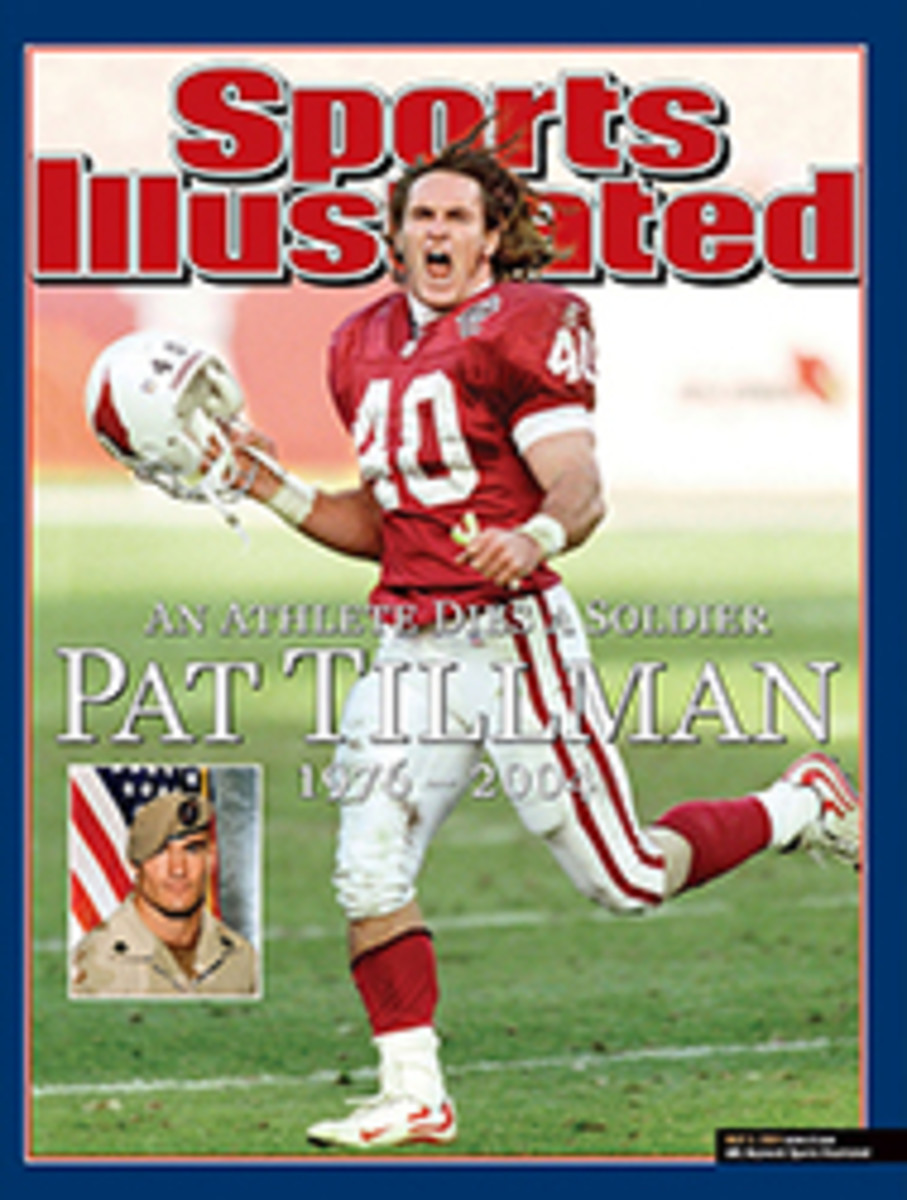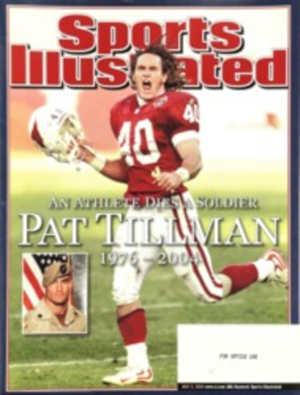
Swing Thoughts One tip is too many and 100 are not enough for the golfaholic author, whose unscripted trip detours to the lesson tee
Winging It
THIRD IN A SERIES
So there I was on this languid afternoon in March, stoking the
fires of my latest and most tenacious addiction on the grassy
knob of a driving range, thumping golf balls west into the sun,
one after another, when I saw an elfish man in a blue shirt
watching me from behind. He clearly saw something in my swing,
flawed as it is with the clubhead planing from outside to in (the
poisonous residue of a boyhood misspent playing baseball), that
suggested I needed a swing doctor, if not an entire trauma team.
And surely he also detected--in the wild-eyed looks, the grim
beetle-browed determination, the manic intensity--all the
telltale signs of a range rat, a golfing junkie. ¶ Approaching in
a lull between buckets, he introduced himself as Alan Hughes, a
teaching pro, and handed me a yellow flyer detailing his rates.
"I normally charge $50 an hour," Hughes said, "but during my
spring special I'm giving a $20 discount! That's $30 for an hour
instead of $50. Are you interested?"
Would a dying man turn down a cigarette? "I need a fix," I said.
"When can we start?"
My itinerant golfing journey down the Atlantic Coast, begun on a
cold February day in Washington, D.C., was not even half over,
but I had already taken three lessons from three pros. And please
remind me to pass around those photos I took on that rainy day in
Southport, N.C., when I underwent a lengthy swing analysis at a
pleasant little storefront called Golf Etc., smacking balls
through laser beams that measured my clubhead speed (104 mph) and
ball flight (left to right, fore!). Now here was Hughes signing
me up for yet a fourth course of instruction.
I was beginning to wonder, Is there a 12-step program for this
form of intoxication? A Golfers Anonymous? I imagined myself
standing up at a GA meeting surrounded by 30 dimpled white heads.
I'm Bill, and I'm a golfaholic! ("Hi, Bill!") I guess it all
began after I retired in 2001 and began hanging out at the Olney
Golf Park in Maryland. It has a pretty island green 150 yards out
surrounded by a watery moat, with a 265-yard carry to the back
fence. I started hitting 100 balls a day. Then 200 a day. Then
300! Pretty soon I was hitting 350 balls a day and drinking five
bottles of Mountain Dew! ("Ohhhhh!") By September my life had
become unmanageable. Golf is a cunning, powerful foe. I tried to
quit but kept coming back. I started hiding balls all over the
house--in cabinets, under the sink, in the basement. I'd get up
at three in the morning and putt them around the living room!
This was not far off the mark. Three days before I left on this
journey, I had a final consultation with my Olney pro, Jim Estes,
who had been exhorting me, "I want you to draw the ball. Swing
inside out!" Far easier said. I was on this odyssey only two
short days when I was at the Capital Golf Center in Wake Forest,
N.C., beseeching pro Jeff Robinson to cure my slice. He decided
that my posture was all wrong: "You are squatting, and your seat
is too far under you," he said. This flaw ultimately led, in a
chain reaction, to a downswing that came over the top. "That's
why you're pushing or slicing the ball," Robinson said. "It all
begins with your faulty posture. Stand up to the ball! Bend over
at the waist. Stick out your butt, and arch the small of the
back."
Miraculously, the drives began to straighten out. In fact the fix
lasted until I got to Glen Dornoch, in Little River, S.C. There
the wicked genie, emerging in a wisp of smoke, came out of the
bottle again. I immediately fell upon the mercy of Andrew
Ziegler, a Glen Dornoch assistant pro who played 18 holes with me
and saw my swing as a clubhouse divided: "Your legs hit the ball
right, and your arms hit it left. If you're in good rhythm with
the club face square at impact, and if your arms and legs are
working as one, you'll hit it straight."
I began to see the game as a species of madness. Is there
anything in sport as difficult as hitting a golf ball
consistently well--striking a perfectly round white ball, perched
high and stationary on a tee, 275 yards down the middle of a
narrow fairway? And is there anything quite as elusive as the
consistently correct swing? (By the way, this just in: David
Duval, please call your office.) The perfect swing is a phantom,
a ghost, an apparition. There one moment, vanished the next. PGA
Tour journeyman Gary Hallberg once recalled those days when his
swing had vanished and he set about asking everyone to look at
his action. "Every Tom, Dick and Harry--and Gladys," he said. One
day, facing a gallery of tournament fans and looking for a fresh
opinion, he announced, "Excuse me, is there anyone here who's
never played golf?" A lone woman raised her hand. "Would you mind
having a look at my swing?" he asked her.
I was floating from one pro to the next, taking a little from
here and a little from there, until my swing appeared as if it
had been assembled by committee. By the time I left the old
course at Fort Benning, Ga.--where I even had the pro there, Kurt
Sokolowski, check my swing for booby traps--I was tired, confused
and in desperate need of salvation. Heading west for the Robert
Trent Jones Golf Trail in Opelika, Ala., home of the fabled Links
course, I hit the brakes when I saw the sign off the road:
PROPHETESS MARY/SPIRITUALIST & HEALER -- ADVISOR. Almost 20 years
before, while engaged in a long and futile search for the elusive
chess genius, Bobby Fischer, I had consulted with a California
psychic named Madame Lola, and that very night I ran into Fischer
at the L.A. Public Library.
Now I was huddled in a dimly lit room in rural Alabama with
Prophetess Mary, who advised me that I would one day soon break
80--my most fervent golfing wish--and straighten out my slice to
boot. Dousing me with holy water, she intoned, "You have to keep
trying, you have to keep fighting, 'cause you're going to make
it! Things will be better, brighter for you late in this year."
"My golf game will be better?" I asked hopefully.
Mary nodded: "Your wish is going to come true."
I felt buoyed that day on the Links course, an 18-hole gem that I
played alone until I was joined at the turn by a large man with a
feathery touch around the greens. He was Keith Butler, the
linebackers coach for the Pittsburgh Steelers, who was down
scouting Auburn players for the NFL draft. At the moment, though,
the former Seattle Seahawks linebacker was honing his game for a
golf outing on Hilton Head Island with the Steelers' offensive
coordinator, Kenny Whisenhunt. Butler was searching for his
stroke. "I have to find a swing before I go to Hilton Head," he
said, "or I'm going to get killed. I'm a five handicap.
Whisenhunt's a scratch golfer. I have to get ready for him."
And I, at last, had to get ready for Florida, the penultimate
goal of this five-week journey. Two days after leaving Opelika,
following a visit to the infamous Confederate prison at
Andersonville, Ga., I was tooling into the World Golf Village in
St. Augustine, Fla., the home of the World Golf Hall of Fame and
two memorable courses (the Slammer & Squire and the King & Bear).
The Slammer was the first course I played on the trip that had
lush, green rough and manicured fairways--no dormant brown
Bermuda rough here--and I navigated its landscape with an affable
Viennese fireman named Wolfgang Merschitsch, who had winged into
Miami from Austria and was living out of his rental car, saving
his money for golf. He already had a tale to tell back home.
"Don't misunderstand me," he said quietly in a thick accent
between putts, "but I was parked in an area last night with, ah,
Negroes. We don't have Negroes in Austria, and I'd never talked
to one before. It made me nervous. I didn't know what to say. But
there was no problem."
We played on. "So is Mozart your favorite music?" I asked.
"No!" Wolfgang said. "The Rolling Stones. Or Genesis."
"Ah, the modern Austrian!"
"No, the normal Austrian. Just because a man is from Montana
doesn't mean he listens to country music."
Dinosaur that I am, I listened to Mozart, Enya and the Sleepless
in Seattle sound track through most of the journey home, stopping
overnight in Camden, S.C., to spend an evening with horseman John
Veitch, the trainer of the immortal Alydar. I ended up passing
the final weekend at the celebrated Greenbrier, Sam Snead's
elegant old haunt in White Sulphur Springs, W.Va. It was the
ideal place to reunite with Carolyne, my fiancee. We had brook
trout for breakfast. We played golf on the Meadows course. She
went to the spa. I toured the vast, obsolete bomb shelter built
under the resort at the height of the cold war that was designed
to house all the members of Congress in the event of nuclear war.
I had not taken a lesson since leaving the scenic Golf Club at
Cedar Creek, in Aiken, S.C., and it had taken all my willpower to
resist the teaching academy at World Golf Village.
But it was different now. I had not played for several days and
felt a renewed vigor--and with it the need for a small
fine-tuning. "Relax the arms and forearms so you feel the weight
of the clubhead," said teaching pro John Kuliesh. "Your arms are
too rigid, which keeps your club face open so you slice. Feel
your arms extend toward right centerfield. Relax your hands.
That's it. Bingo!"
On to the Midwest and the bluegrass. My Old Kentucky Home on
Derby Day.
TWO COLOR PHOTOS: PHOTOGRAPHS BY WILLIAM NACK SAM'S CLUB After an encouraging session with Prophetess Mary(sign, inset), the next stop was Snead's old haunt, theGreenbrier.
COLOR PHOTO: PHOTOGRAPHS BY WILLIAM NACK
FIVE COLOR PHOTOS: PHOTOGRAPHS BY WILLIAM NACK SAY A LITTLE PRAYER A roadside supplication and the smallestchurch in the U.S. highlighted the drive to Camden, S.C.
COLOR PHOTO: PHOTOGRAPHS BY WILLIAM NACK PRICE IS RIGHT Hughes charged a special rate of $30 for an hourof wisdom.
THREE COLOR PHOTOS: PHOTOGRAPHS BY WILLIAM NACK DISASTER AREA The huge bomb shelter beneath the Greenbriercontains (clockwise from bottom left) diversions, provisions anda grim disposal unit in case of casualties.
COLOR PHOTO: PHOTOGRAPHS BY WILLIAM NACK ENSHRINED Snead, who died in 2002 near the Greenbrier, was knownfor his record 81 Tour wins and trademark straw hats.

